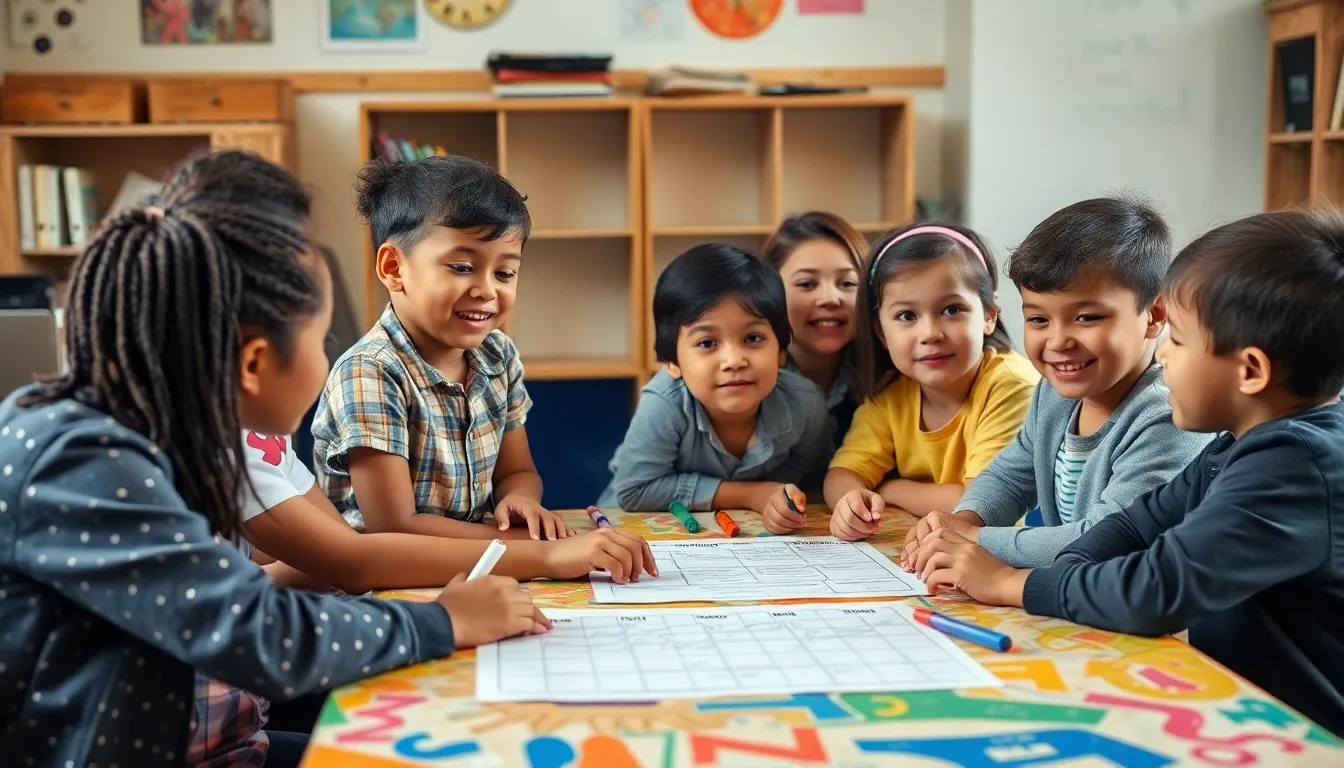Table of Contents
ToggleSetting goals isn’t just for adults in suits with coffee-stained ties. Kids can benefit from goal setting too, and it can be a game-changer for their growth. Imagine a world where children tackle their dreams like superheroes, armed with a plan instead of just wishful thinking. By learning to set achievable goals, they can turn their ambitions into reality—without needing a cape.
Understanding Children’s Goal Setting
Children benefit significantly from the practice of setting goals. Learning to outline achievable objectives fosters a sense of accomplishment and enhances their self-esteem.
Importance of Goal Setting in Childhood
Goal setting plays a crucial role in childhood development. Achievable goals help children channel their energy effectively, leading to increased motivation and focus. Research shows that kids with defined goals perform better academically and socially. It prepares them for future challenges by teaching responsibility. These experiences cultivate resilience, as children learn to navigate obstacles while pursuing their aspirations. When children understand the process of goal setting, they feel empowered to take ownership of their achievements.
Developmental Stages and Goal Setting
Understanding a child’s developmental stage is vital for effective goal setting. Younger children, typically ages 5-7, grasp simple, tangible goals. They enjoy expressing aspirations related to play or academics. As they grow, usually around ages 8-10, children begin formulating more complex goals that require planning and effort. Tweens, ages 11-13, often set personal or social goals, reflecting their growing independence. Teenagers, ages 14-18, prioritize academic and career-oriented objectives. Each stage presents unique opportunities for guiding children in setting relevant and attainable goals, contributing to their overall growth and development.
Strategies for Effective Goal Setting


Effective goal setting for children requires an understanding of their developmental stages and individual motivations. It’s crucial to provide children with clear structures and encouragement throughout the process.
SMART Goals for Children
SMART goals can significantly enhance a child’s ability to achieve objectives. Specific goals articulate what a child wants to accomplish. Measurable benchmarks provide evidence of progress. Achievable targets ensure that goals are realistic. Relevant aspirations relate to a child’s interests and skills. Time-bound deadlines instill a sense of urgency. Together, these elements create a comprehensive framework guiding children toward successful outcomes.
Encouraging Intrinsic Motivation
Intrinsic motivation plays a vital role in goal achievement. Encouraging children to identify personal reasons for pursuing goals fosters a deeper commitment. Providing opportunities for children to explore their interests enhances their sense of ownership. Supporting autonomy allows kids to make choices about their goals. Recognizing effort and celebrating small successes builds confidence and reinforces motivation. Creating an environment that nurtures passion increases their determination to reach their goals.
Common Challenges in Children’s Goal Setting
Children encounter several challenges when setting goals, which can hinder their progress and motivation. Recognizing these challenges enables parents and educators to provide the necessary support.
Overcoming Fear of Failure
Fear of failure often paralyzes children and prevents them from pursuing their goals. This fear stems from a lack of confidence in their abilities or the pressure to succeed. Encouraging children to view failure as a learning opportunity helps them develop resilience. Creating a safe environment where mistakes are treated as part of the growth process empowers kids to take risks. Celebrating small achievements fosters a positive mindset, encouraging them to keep pushing forward even when faced with setbacks.
Addressing Unrealistic Expectations
Unrealistic expectations can overwhelm children and lead to frustration. Pressure to achieve beyond their current abilities may result in disillusionment. Educators and parents should guide children in setting achievable goals based on their interests and strengths. Helping them break larger goals into smaller, manageable steps enhances their sense of accomplishment. Encouraging a focus on personal progress rather than comparison with peers allows kids to develop a healthier relationship with their goals. Through this approach, they can better embrace their unique journeys and create a path toward success.
The Role of Parents and Educators
Parents and educators play crucial roles in helping children set and achieve their goals. Collaborative efforts create a solid foundation for children’s success.
Supporting Goal Setting at Home
Supporting children’s goal setting at home involves creating a nurturing environment. Parents can initiate conversations about dreams and aspirations, helping kids articulate their interests. Setting aside time for discussions allows children to feel heard and valued. Encouragement to explore personal preferences often leads to realistic goal formulation. Parents should also celebrate small achievements, reinforcing each step toward larger objectives. By modeling goal-setting behaviors, parents demonstrate practical applications that inspire children.
Encouraging a Growth Mindset in Schools
Encouraging a growth mindset in schools is essential for developing resilience. Educators can promote this mindset by emphasizing effort over innate ability, fostering a culture that values persistence. Integrating activities that challenge students helps them confront setbacks constructively. Storytelling and examples of successful figures who faced challenges can motivate students to view obstacles as learning opportunities. Feedback from teachers should focus on improvement and growth, guiding students in recognizing their progress. Creating cooperative learning environments also enhances peer support, encouraging collective achievement.




